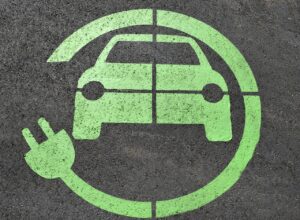
What is the French regulation on electric vehicle retrofitting ?
Since March 13, 2020, a major turning point has occurred in the electric vehicle retrofitting activity, which involves converting one's thermal vehicle into an electric one. This ministerial decree has lifted the barriers that once hindered the conversion of thermal vehicles into electric ones, thus paving the way for a silent but inevitable revolution.
Before this date, any attempt at transformation required the approval of the original manufacturer, making this option nearly impossible due to the decree of July 19, 1954 , concerning the approval of motor vehicles.
Thedecree of March 13, 2020, introduced well-defined conditions that democratized electric retrofitting in France, opening a new horizon for advocates of electrification and offering an opportunity fora more sustainable and circular automotive future..
Indeed, the initial decree on March 13, 2020, laid the groundwork for the electric retrofitting activity. Therefore, it is required that the aspects related to homologation, and ultimately to the safety of the vehicle,concerning the modifications made, be of the same standard as a new electric vehicle.
This thus leads to one of the strictest regulations in the world regarding electric retrofitting. Due to its stringency, the French regulation appears to be the starting point for European harmonization..
The decree also specifies the technical characteristics to be respected concerning the dimensions, weight, and mass distribution of the vehicle as well as the power delivered by the motor.
Thehomologation for a conversion kit is required for each given model and version of the vehicle.Homologation involves presenting and testing a single vehicle with the technical services, which then authorize the conversion of all vehicles of the same model.
To discover the CirculaCar vehicle catalog available for conversion, click here.
Why was a new retrofit decree published ?
The first electric retrofit approvals took a long time to obtain because some elements of the regulation were difficult to apply to this activity. Furthermore, certain specific cases were simply not foreseen in the regulations, such as vehicles that had undergone multiple approvals (ambulances, tow trucks, crane trucks, etc.). It was from the first homologation experiences that the government, in consultation with experts in the field, wanted relax the procedures while maintaining a high level of safety requirements in order to facilitate the development and industrialization of the electric retrofit sector.
What are the technical requirements for electric retrofitting in France ?
In order to convert a light commercial vehicle from thermal to electric, certain technical requirements must be met :
- The dimensions of the base vehicle must not be altered by the conversion.
- The continuous power for 30 minutes of the electric motor must be between 40% and 100% of the initial thermal engine power.
- The maximum technically permissible mass cannot be increased.
- The curb weight of the vehicle in running order after conversion must not exceed more than ±20% of the initial weight.
- The distribution of the vehicle's curb weight between the axles after conversion must not exceed more than ±10% of the initial distribution between the axles.
What does the new electric retrofit regulation bring ?
TheThe decree of September 12, 2023, concerning electric retrofitting, generally brings about the following changes :
- Transformed vehicles that have undergone multiple approvals and the VASP category (Specialized Self-Propelled Vehicle) such as ambulances, breakdown trucks, camper vans, etc., are now included in the scope of electric retrofitting.
- The test for electric motor power has been clarified, and the minimum power requirement has been reduced.
- The homologation procedures are simplified, no longer requiring the presence of technical services for certain tests such as vehicle dimensions and weight, power determination, demisting, heating, etc.
- The calculation of CO2 emissions is now established and transparent. For a light commercial vehicle under 3.5 tons, converting it to electric results in a 60% reduction in CO2 emissions compared to continued use in thermal mode for 10 years.
- The The AVAS system, which is an acoustic device warning pedestrians, is now mandatory on vehicles converted to electric.
- Installers of retrofit solutions can now, by derogation, come from a neighboring country to France.
If you're interested in the retrofit solution or if you have any questions, feel free to contact us here !
